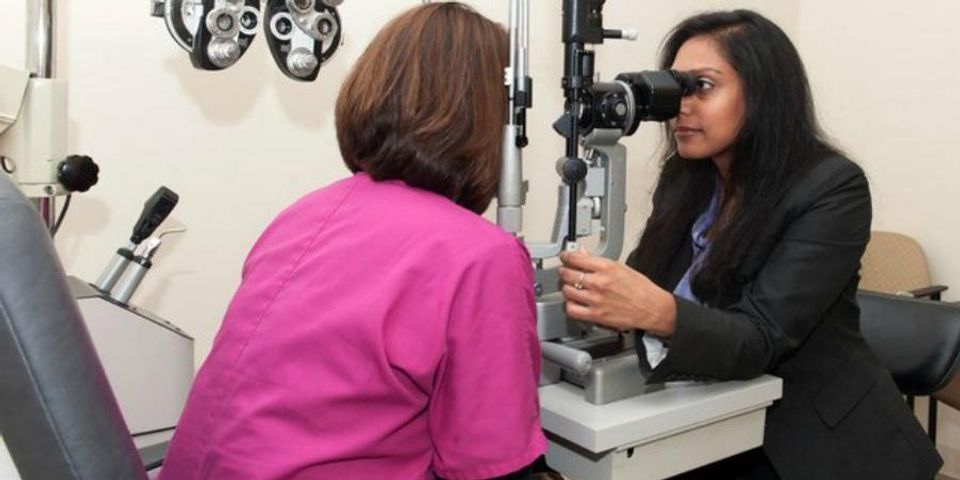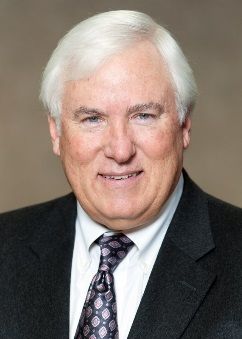Glaucoma Eye-Q January is Glaucoma Awareness Month

Glaucoma is often referred to as the “sneak thief of sight” because many times will there are no symptoms, no pain, and no noticeable changes in your vision, yet glaucoma can slowly cause a loss of vision.
Take this easy True / False test and to protecting vision for a lifetime.
True or False
- Glaucoma tends to run in families.
- Glaucoma is more common in African-Americans than Caucasians.
- A person can have glaucoma and not know it.
- A person is more likely to get glaucoma if they are over 60.
- Eye pain is often a symptom of glaucoma.
- Glaucoma can be cured.
- Glaucoma is caused by increased eye pressure.
- Vision loss from glaucoma can be restored.
- A complete glaucoma exam consists only of measuring eye pressure.
- People at risk for glaucoma should have an eye examination through dilated pupils.
- Steroid use can increase your risk of glaucoma.
- Eye injuries can cause secondary glaucoma.
Answers to the Test
- Glaucoma tends to run in families.
True. Glaucoma does tend to run in families, although a hereditary basis has not been established. If someone in the immediate family has glaucoma than a thorough eyes examination through dilated pupils on a yearly basis should be completed. Share this fact with family and friends.
- Glaucoma is more common in African-Americans than Caucasians.
True. Glaucoma is three to four more times more likely to occur in African-Americans than in Caucasians. In addition, glaucoma is six times more likely to cause blindness in African-Americans than in Caucasian. Also, people of Hispanic origin have an increased risk of incidence of glaucoma and blindness from glaucoma as well.
- A person can have glaucoma and not know it.
True. The early stages of open-angle glaucoma, the most common form, usually have no warning signs. However, as the disease progresses, a person with glaucoma may notice his or her side vision gradually failing. Additionally, they may notice that colors seem less vivid.
- A person is more likely to get glaucoma if they are over 60.
True. Everyone over 60 has an increased risk for glaucoma. People think of glaucoma as an “older persons” disease but in fact, everyone is at risk for glaucoma and people of all ages can get glaucoma, even babies.
- Eye pain is often a symptom of glaucoma.
False. People with glaucoma usually do not experience eye pain or any symptoms of the disease. That is why glaucoma is the “sneak thief of sight.”
- Glaucoma can be cured.
False. Glaucoma cannot be prevented, nor is there a cure, but its resulting blindness can be prevented. Early detection so that treatment can begin is the best way to prevent blindness from glaucoma. It is easiest to prevent blindness if treatment is started earlier versus later in the disease.
- Glaucoma is caused by increased eye pressure.
True. Sometimes in glaucoma, for reasons still not completely understood, the fluid drains too slowly out of the eye. As the fluid builds up, the pressure inside the eye rises. Unless this pressure is controlled, it may cause damage to the optic nerve and other parts of the eye and loss of vision.
- Vision loss from glaucoma can be restored.
False. Vision loss from glaucoma is permanent. However with early detection and treatment, the progression of visual loss can be slowed, or halted, and the risk of blindness reduced.
- A complete glaucoma exam consists only of measuring eye pressure.
False. A measurement of the eye pressure by tonometry, though an important part of the comprehensive exam, is by itself not sufficient for the detection of glaucoma. Glaucoma is detected most often during an eye examination through dilated pupils. A thorough dilated eye exam is pain-free and takes less than an hour to perform. A dilated eye can also pick up other potential problems such as cataracts and diabetic eye disease.
- People at risk for glaucoma should have an eye examination through dilated pupils.
True. An eye examination through dilated pupils is the best way to diagnose glaucoma. Individuals at increased risk for the disease should have their eyes examined through dilation on a yearly basis by an eye care professional.
- Steroid use can increase your risk of glaucoma.
True. Some evidence links steroid use to glaucoma. A study associated reported in the Journal of American Medical Association showed a 40% increase in the incidence of increased pressures in adults who required 14 to 35 puffs of a steroid inhaler to control asthma. This is typically in rare cases of severe asthma.
- Eye injuries can cause secondary glaucoma.
True. Injury or direct trauma to the eye may cause secondary or traumatic glaucoma. This may happen immediately after the injury or years later.
Please share this glaucoma test with your family and friends. Digby Eye Associates would love to help you with your eye care needs. To speak with a member of our professional staff call us in Greensboro Office at 336-230-1010 or High Point at 336-454-2020. Feel free to also check out our website at www.digbyeye.com.
Want to know more about Glaucoma? Sign up for monthly newsletters and updates with the Glaucoma Research Foundation at https://www.glaucoma.org/news/gleams/signup.php

Donald J. Digby, MD, FACS, FAAO
Don Digby, M.D. a native of Atlanta, Georgia is a corneal fellowship-trained ophthalmologist who moved his practice to Greensboro, NC in 1984. His practice focuses on anterior segment surgery and medical ophthalmology. He was one of the first surgeons in the country providing true laser cataract surgery using the LenSx Laser. LenSx cataract surgery is recognized as revolutionary in the technology of cataract surgery and astigmatism correction. Medically, he focuses on the management of glaucoma and diabetic eye disease as well as routine eye care. Dr. Digby is one of the most experienced surgeons in the nation in the implantation of the ReStor Multifocal Lens implants for correction of cataracts and the aging eye (presbyopia). He is also a leader in astigmatism correction using both the laser and specialized Toric lenses.
A “Georgia Bulldog” and graduate of the Medical College of Georgia, Dr. Digby completed his internship and residency in Ophthalmology at the Naval Regional Medical Center San Diego and served as Chief of Ophthalmology at Naval Regional Medical Center in Guam. He completed his Cornea and Anterior Segment Surgery Fellowship at the Hallum-Arnold Foundation in Atlanta Georgia.
He is board certified by the American Board of Ophthalmology and is a Fellow of the American Board of Ophthalmology and the American College of Surgeons. He is an active member of the American Society of Cataract and Refractive Surgeons and the International Society of Refractive Surgeons. Dr. Digby is also involved in state and local professional organizations having served as both Secretary and Legislative Liaison for the Executive Board of the Greater Greensboro Society of Medicine. He is an active member of the NC Society of Eye Physicians and Surgeons. Dr. Digby is a frequent lecturer to his peers within the medical community and has served as a consultant to numerous manufacturers within eye care.
In addition, he established Digby Eye Associates as a teaching site for Family Practice and Internal Medicine residents of the UNC-Moses Cone residency program and was named Adjunct Associate Professor for the University of North Carolina Chapel Hill School of Medicine. Previously, he also held an adjunct clinical associate professor position in the Dept of Ophthalmology Duke University School of Medicine.
Dr. Digby founded Digby Eye Associates in 1988 with a vision that remains today — combine the staff’s unique qualifications of world-class experience to provide the best possible eye care in an environment of friendship and compassion. Dr. Digby insists on continued medical education for all levels of the staff, which continues to distinguish Digby Eye Associates as a practice on the cutting edge of advancements in well eye care and medical and surgical treatments.
Dr. Digby and his wife, Marti, spend precious free time with their five children and eight grandchildren and their extended family. An avid sportsman, Dr. Digby is likely to be found with a fishing pole or golf club in his hand. He is a member of St. Pius X Catholic Church.
About the Business
Have a question? Ask the experts!
Send your question

